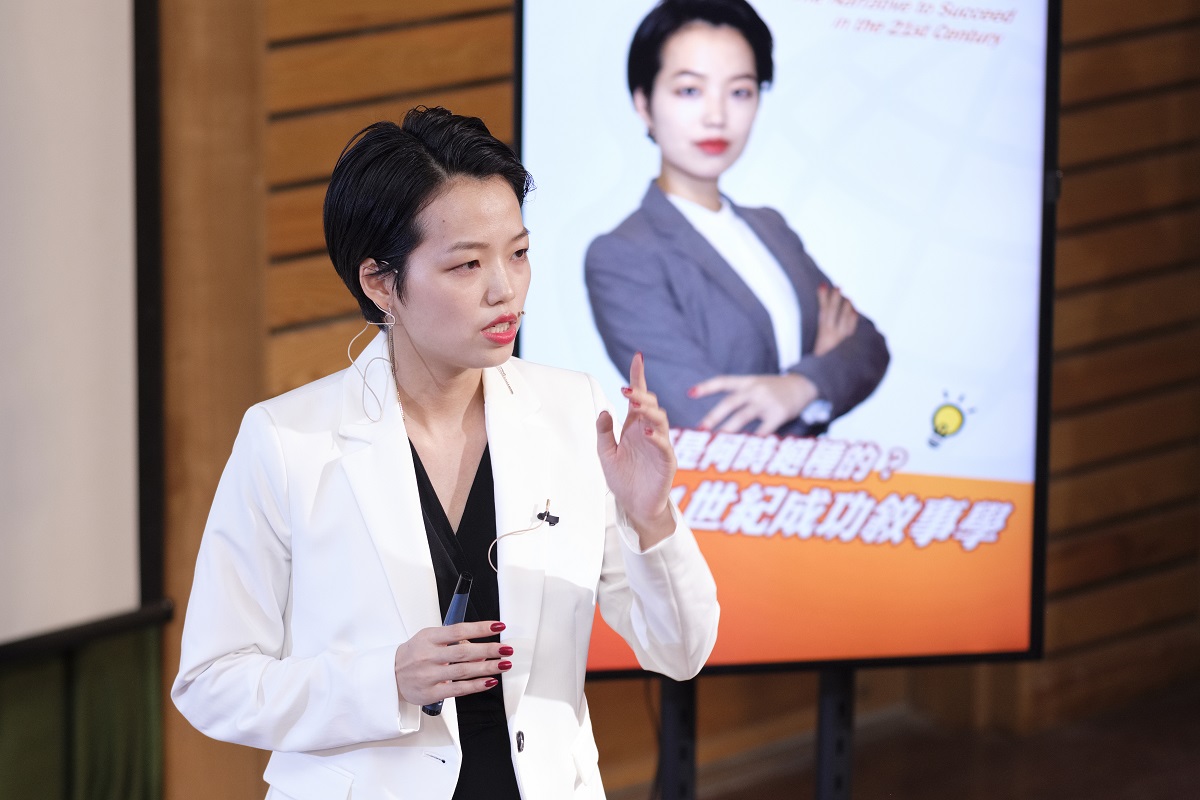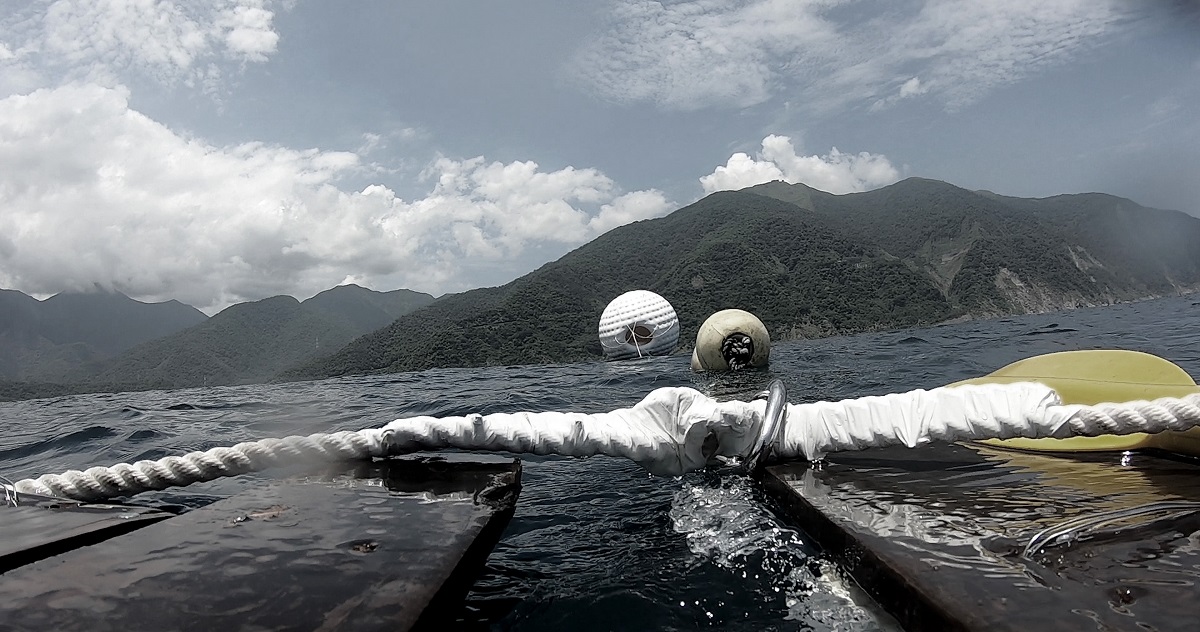隨意走在C-LAB開放空間,瞄到地面上的落葉、拖把、水管、垃圾桶,你是否會反射性以目光搜尋打掃人員的蹤跡?結果沒想到,它們竟是藝術家的創作素材。擾動我們對物件的既定認知,賈茜茹讓表演者「穿上」由垃圾和打掃用具所製作的服裝,作品《斑斕之家》裡有「水管先生」、「落葉堆小姐」、「拖把小姐」三個角色,這三個人將以「物的姿態」做著奇怪的行為,在「Re: Play 操/演現場」展覽期間現身C-LAB園區。
賈茜茹將身體視為雕塑的一部分,而二戰後的日本,具体派藝術家田中敦子把自己裝進以燈管製成的服裝裡,她1956年的作品《電器服》(Electric Dress)在當時被視為一件「雕塑」,極具前衛性。林人中《如果具体派宣言是一首舞譜》公開招募民眾參與,一起重訪包含田中敦子在內的具体派作品,以七天的時間共同發展、排演、測試,最終發表成果。那麼關於本地的身體展演方式呢?陳武康《九〇年代的四個劇場性事件》以口說演出的形式,表現陳明才、侯俊明、臨界點劇象錄劇團與臺灣渥克劇團的四個劇場性事件,帶觀眾重回1990年代解嚴後的那段臺灣文化創造力最生猛有力的時刻。
上述三個作品依序分屬「展演現場」、「推衍現場」、「檔案現場」,分別由莊偉慈、林人中、王柏偉策展,構成C-LAB秋季年度大展「Re: Play 操/演現場」。展覽以「現場藝術」(Live Art)為基礎,邀請16位藝術家,結合行為、舞蹈、劇場、聲音、音樂、錄像、講座展演、工作坊等形式,跳脫傳統敘事、顛覆既有認知。不論是喜歡輕鬆欣賞藝術家幽默和美學,或熱愛研究歷史脈絡的觀眾;不論你享受有點距離的觀看,或偏好與作品互動,甚至想與藝術家面對面一起創作,都能在此得到滿足。
 林人中《如果具体派宣言是一首舞譜》排練畫面。圖/林人中提供
林人中《如果具体派宣言是一首舞譜》排練畫面。圖/林人中提供
2000年以降,「現場藝術」漸漸成為國際藝術場景的焦點。最早是視覺藝術家將表演融入作品中,在美術館內呈現;一般都會提到提諾.塞格爾(Tino SEHGAL)2002年的作品《吻》(Kiss),內容是一對穿著休閒的男女在美術館內擁吻,他們或躺或站或跪,接吻、撫摸、擁抱,持續地變換姿勢並緩慢移動。透過編舞,這兩名舞者表演美術史中與吻有關的繪畫和雕塑;創作者不認為這是一段舞蹈、行為或戲劇,他稱之為「建構情境」(constructed situations)。
隨著現場藝術的作品愈來愈多元,早已不再受限於藝術的形式、類型或場地,唯一的條件只有「現場」。成立於1999年,英國的現場藝術發展協會(Live Art Development Agency)網站上寫著:「無論看起來像什麼,無論在哪裡發生,現場藝術總在探索現場事件的可能性,和我們的體驗方式。」(Whatever it might look like, and wherever it may take place, Live Art always explores the possibilities of the live event and the ways we can experience it.)
賈茜茹《斑斕之家》裡同樣的落葉、拖把、水管,若是放在美術館展覽空間的地板上,人們反射性目光尋找的大概會是作品說明牌,而非打掃人員,但若在C-LAB戶外空間就會產生意外的驚奇感。「展演現場」的部分作品意在創造這種日常生活的驚奇感,策展人莊偉慈嘗試藉此翻轉人們對空間的既定想像。C-LAB在歷史進程中層層疊加了不同的空間紋理,如今成為一個「非典型展演空間」,李銘宸《解体素描》將在戶外進行現地演出,挑戰人們對空間的認知。到底是我們定義了空間意涵?還是空間定義了身處其中的我們?
 張紋瑄,《魚尾獅是何時絕種的?――21世紀成功敘事學》。圖/關渡美術館提供
張紋瑄,《魚尾獅是何時絕種的?――21世紀成功敘事學》。圖/關渡美術館提供
「展演現場」另一部分作品則有關歷史的重述,但「重述」不是照本宣科演一遍,而是提出新的敘述方式。《魚尾獅是何時絕種的?――21世紀成功敘事學》的創作者張紋瑄化身「張老師」,模仿時下流行的成功人士演說,演出一場分享講座;她以亞洲四小龍為例,看似在發表普遍認知的國家論述,實際上以虛構的立論反諷所謂「成功國家」的概念。何采柔、黃思農《換景》在原本就有許多柱子的通信分隊大樓空間內,再設置可移動的假柱子,並開放觀眾自行移動,改變空間的場景;作品以柱子指涉紀念碑,探詢空間和記憶的關係,而每週的表演將在這變動的空間中進行。
《The White Waters》是蘇匯宇重訪1993年田啟元劇作《白水》之作;當年,田啟元安排四位男演員為主角,演出《白蛇傳》「水漫金山寺」段落,顛覆這個中國傳統故事的性別設定。蘇匯宇的作品並非搬演當年的《白水》,而是回溯文本後的再製;他以電影的「補拍」描述自己這樣的創作方法,擴充、補述原先沒能梳理的部分。《The White Waters》聚焦死亡、暴力、性、疾病等意象,結合錄像裝置與現場表演。
田啟元等人創建的劇團「臨界點劇象錄」(通常簡稱「臨界點」),發跡於解嚴後,在當時保守的社會氛圍中大談性別、同志和愛滋病等議題,是臺灣前衛劇團的代表。《九〇年代的四個劇場性事件》即包含田啟元劇作《阿女.白色瑪格麗特》,內容講述臺灣女共產黨員謝雪紅的一生;這次透過陳武康的表演,一窺當時劇場與社會運動的關係。彼時那個剛從長達38年戒嚴枷鎖中釋放的臺灣社會,人們還沒被後來興起的體制給馴化,於是生出許多任性、亂七八糟卻迷人的傳奇人物和故事,比如才華洋溢的陳明才,代表一種失敗的壞掉人生卻備受懷念;比如侯俊明《侯府喜事:拖地紅》,挑釁性與親密關係的公私領域分界;比如臺灣渥克劇團訴諸的素人身體與表演方式。「檔案現場」策展人王柏偉挑出這些人與事,試著提煉1990年代臺灣劇場的身體形象。
現在的臺灣社會,對於特定形象已有既定共識,譬如提到檳榔西施、黑道大哥、草根男人、俊男美女,似乎很快就有了畫面;不過,王柏偉認為在1990年代至2007年智慧型手機普及前,臺灣人在思考自我或自我身體形象時,一個可預期的社會性形象尚未成形,因此有較為寬廣的演繹空間挑戰、尋找某種身體形象,反映在電影中。他找來影評人陳平浩,以臺灣新浪潮至2000年初期的電影為範圍,重看其中特殊的人物形象,帶來一系列「身體、劇場與電影」的講座。
高俊宏《回製(原「山喬菌宏如何重複我的藝術」計畫,2002)》,重製四個他在2000年前後進行的行為藝術。王柏偉指出,高俊宏透過行為藝術「反省自己的身體如何被制度化」,用自己來對抗自己的身體。譬如他曾吃報紙,將「資訊」咀嚼後吐出;1998年「社會化無聊」系列,他追著淡水線捷運來回跑,或是在許多地方不斷跳上跳下,到體力不堪負荷為止。這次他「回製」四件作品,包含前述的《跳》,當年因為東西被偷沒能完成的《再會,從此離去(前進地心)》,與抱著大球漂浮在海防邊界的《泡沫的消失》。這些行為由他獨自進行,並以影像記錄。行為藝術可以重做嗎?重做的行為藝術,到底屬新作、舊作或兩者皆是呢?創作者是否嘗試將心境調回至20年前,重做行為;又或者是以現在的心境,重做當年的行為呢?展覽將原作和回製的影像並陳,映照高俊宏個人生命狀態的變化。
 高俊宏,《重新演練2000年的《泡沫的消失》一作》。圖/高俊宏提供
高俊宏,《重新演練2000年的《泡沫的消失》一作》。圖/高俊宏提供
「推衍現場」規畫三場工作坊,策展人林人中將「工作坊」(workshop)轉為動詞概念(workshopping),成為一種共創的動態展演過程,勾勒排演(rehearsing)、重演(restaging)或再入境(reentering)三種動態,討論創作能如何從個人研究到集體排演,而藝術家在這過程中的角色與位置又是如何變動。他強調的是對同一主題的重複回訪與創作;譬如基於長時間的投入研究,創作者反覆進出同一題旨,不同階段的作品反映當下的理解與感受。蘇品文的「少女須知」計畫三部曲,以舞蹈實踐女性主義,自2018年起逐年發表三階段作品,皆有不同的切入點和形式。這次她以《作品名稱未定》為題,從個人創作改為集體創作的模式,運用既有的經驗和參與者共同排演當代女權身體。
又或者如林人中的重演具体派。他對於具体派在當時的時空背景下,選擇將自己的藝術實踐聚焦美學,而非政治批判的路線深感興趣,因此投入研究,並走訪日本關西進行田野調查,訪問相關研究學者。林人中透過具体派重新認識身體的使用方式,身體能如何與媒材互動;這次《如果具体派宣言是一首舞譜》,計畫和參與者一起討論、重演具体派經典作品的身體形象,呈現介於繪畫、雕塑與行為藝術間的擴延性編舞。
「Re: Play 操/演現場」透過歷史、當代、集體排演三個不同面向,建構展覽的深度與廣度。作品有涉及性別、傳統文化、歷史、社會運動、空間等議題,也有觸及創作者個人經驗的幽微感受,和許多實驗性的嘗試;展覽鋪排了多層次的今昔對照,卻不以歷史論述填滿,反而有著許多的留白讓觀眾自行體驗,打開更多想像與討論空間。